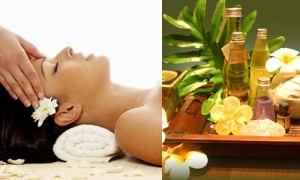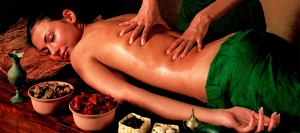The Healing Art of Massage
Of all the healing arts, massage is one of the oldest and the simplest. Every day we unconsciously employ massage techniques because the desire and need to touch, and the action of touching, is instinctual. We stroke our temples to sooth a headache, we hold a friend’s hand to comfort them, we ‘rub away’ a child’s knocks and if there is any injury we ‘kiss it better’. Anyone can further develop this fundamental capacity for touch to provide physical and psychological benefits, which are therapeutic to both the giver and the receiver of massage. Learn more about the healing art of massage.
A Systematic Process of Touch
In general terms, a massage is a systematic process of touch combining a number of techniques – such as stroking, friction, kneading pinching an pressing – in order to enhance health and well-being. There are a variety of massage therapies ranging from the traditional Swedish massage (which is often found in health spas, sports clubs and gymnasiums) to acupressure, shiatsu, deep tissue, reflexology, and gentle aromatherapy massage. Massage is also used in conjunction with other therapies such as osteopathy and chiropractic.
The benefits of regular or even occasional massage therapy are extensive and often profound. The therapeutic and remedial physical benefits – when combined with the psychological benefits of conveyed warmth, understanding, and reassurance – can very quickly produce a secure, uplifted, even exalted sense of wellbeing.
Massage is a process of self-discovery. In learning to massage, we learn to give and to empathise. In receiving a massage we learn to trust; we learn how to accept such a gift. There is a feeling of communion, from which both people emerge with a new understanding of relaxation, peace and vitality.

A Brief History of Massage
The ancient healing art of massage is undoubtedly the oldest form of physical medicine. In China there are references to massage in the oldest recorded medical text, the Nei Ching, written by the Yellow Emperor.
Historical records show that massage therapy was practised widely amongst the Greeks and Romans. In ancient Rome, Julius Caesar, who suffered from neuralgia and headaches, received daily massage. Pliny, the renowned roman naturalist, was treated for his asthma. Calen, the Roman Emperor’s physician, prescribed massage to prepare the gladiators for combat and to treat their injuries.
After the decline of the Roman Empire there is very little physical medicine recorded until the Middle Ages. Fortunately, interest was revived by the French physician Ambrose Pare, who established the credibility of massage amongst the medical profession.
Swedish Massage
The classical technique known as ‘ Swedish Massage’ was developed by the Swedish Professor Per Henrik Ling. He established a school of massage in Stockholm and in1877 Swedish massage was introduced to the U.S. by Doctor Mitchell. Massage began to increase in popularity.
At the present time there is a rapidly growing demand for therapeutic massage. It is widely practiced in clinics, health clubs, and even in many hospitals and hospices. Thousands of therapists have trained, including lay people, as well as doctors, nurses, midwives, osteopaths, chiropractors and physiotherapists who incorporate therapeutic massage into their work. The healing language of touch may complement all forms of orthodox medicine.
The Benefits of Massage
Most importantly, a massage makes us feel that someone cares about us, and this imparts warmth and happiness into our lives.
On a physical level, massage:
- relaxes the central nervous system
- soothes tight, tense, or overworked muscles
- removes toxins from the body
- improves circulation of blood and lymphatic fluid
- increases healing
- softens skin where scar tissue has formed
- breaks down fibrous tissue around joints
- prepares healthy muscle for demanding activity and aids recovery from this activity.
On an emotional level, massage can:
- calm the mind
- reduce stress
- relax or stimulate thought processes
- increase energy levels
- reduce apathy and depression
- soothe emotions
Approaches to Massage
Massage is a two-way flow of touch and response, a mutual exchange. It involves the hands and the skin, which both give and receive – this is the medium for communication and the process through which healing energy can be experienced. These elements are common to all types of massage. However, when it comes to techniques and styles of massage, there is a vast array.
The next few articles give a brief description of some of the current styles of massage. There are many other massage techniques which you may wish to explore such as the rhythmic Hawaiian massage Lomi Lomi, touch for health, and cranio-sacral massage therapy.
Of course, it is possible to incorporate several techniques into the one massage, for example a Swedish massage may be enhanced by the use of acupressure.
♥
Read more in the next article titled: Swedish Massage
